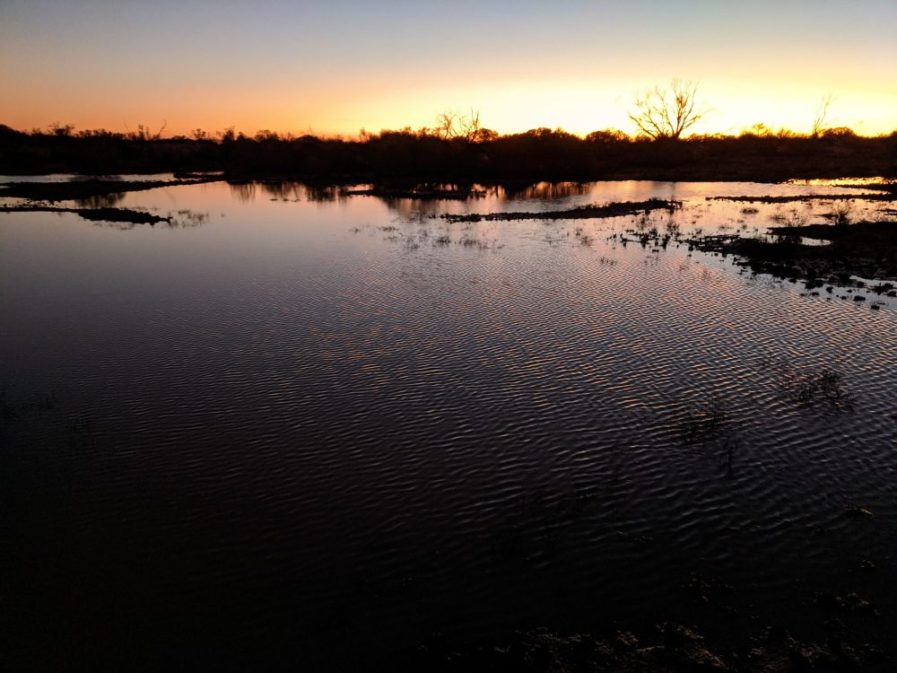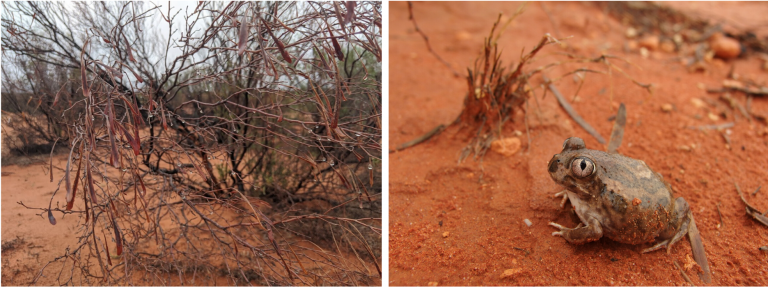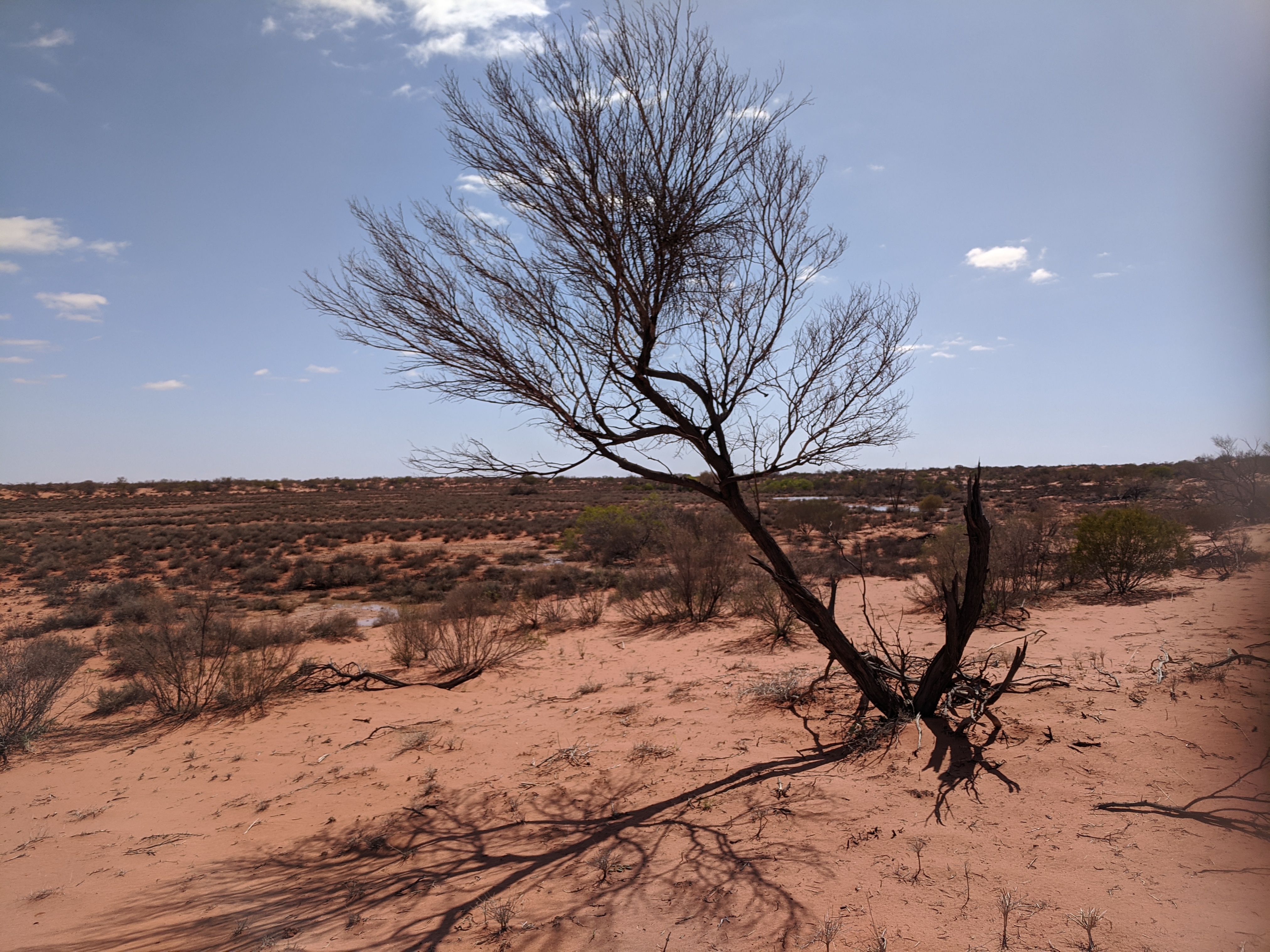Rain and Hope
Katherine Tuft
02 June 2020

After waiting through an achingly long 24 months of drought, solid rain fell this weekend – 50 mm of the glorious stuff.

Our very first task is to check the fence. In a landscape where rain is so infrequent, and especially with less vegetation covering the ground at the moment, when water does move it can flow really fast and erode washouts under the fence. The fence check has to happen urgently to find and fix any breaches before feral cats or rabbits find them. No matter how muddy it is… Thanks to Georgie, Hugh and Katherine for slogging through the bogs to make sure the reserve is secure.

For some months now at least, we can be relieved of our drought response work – all the continuous watering, feeding and checking of soaks – and enjoy the miraculous response of the arid zone to good rain. Within hours of the first rain falling, burrowing frogs emerged from underground to find the nearest puddle and start croaking for mates. A day later, tiny green shoots are starting to push up through the sand as the seed bank comes to life. In a day or so more there will be puddles full of shield shrimp. These prehistoric-looking crustaceans hatch from eggs that lie dormant in the dust for years until rain fills the claypans they breed in.
 Dripping trees after and burrowing frogs after the rain
Dripping trees after and burrowing frogs after the rain
In coming months we will assess the extent of the damage the drought has done. Lots of shrubs have died, and many of the hardy chenopods like pearl bluebush have completely defoliated. Time will tell whether there is life in them still when we see if they re-sprout or not. The rain might just have saved the yellowing mulga trees – we really hope so. Mulgas are slow-growing trees with very hard wood and take a long time to grow to maturity. As for the struggling stick-nest rats, the rain might be too late to help the population at Arid Recovery as we are now down to critically low numbers. Many mulga trees died during the drought
Many mulga trees died during the drought
As much relief as the rain has brought, we know droughts will come again, and that they will be increasingly more frequent and hotter as the climate projections for the southern arid rangelands indicate. Now is the time to review the long dry that’s just been broken, write up which of our drought interventions worked and which didn’t; and start planning seriously for our changing future. Maybe we can help the ecosystem become resilient enough to adapt to the changing climate. It’s going to take good science, people out on country and solid determination.